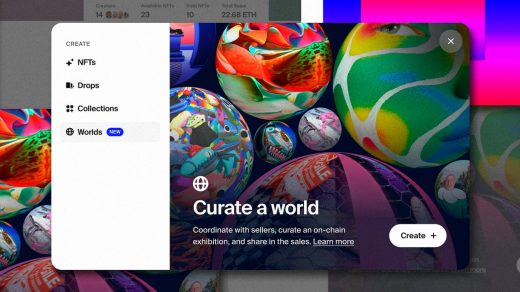Art needs curators—and so do NFTs
By Charlotte Kent
Many people find NFT platforms with their endless squares of images to be overwhelming. Imagine instead that NFTs were organized into a group with an overarching theme or practice. Imagine a text that explains the idea for the selection of works. In mainstream contemporary art, we call that an exhibition, and curators do that work. Recently, crypto art has been adopting something similar.
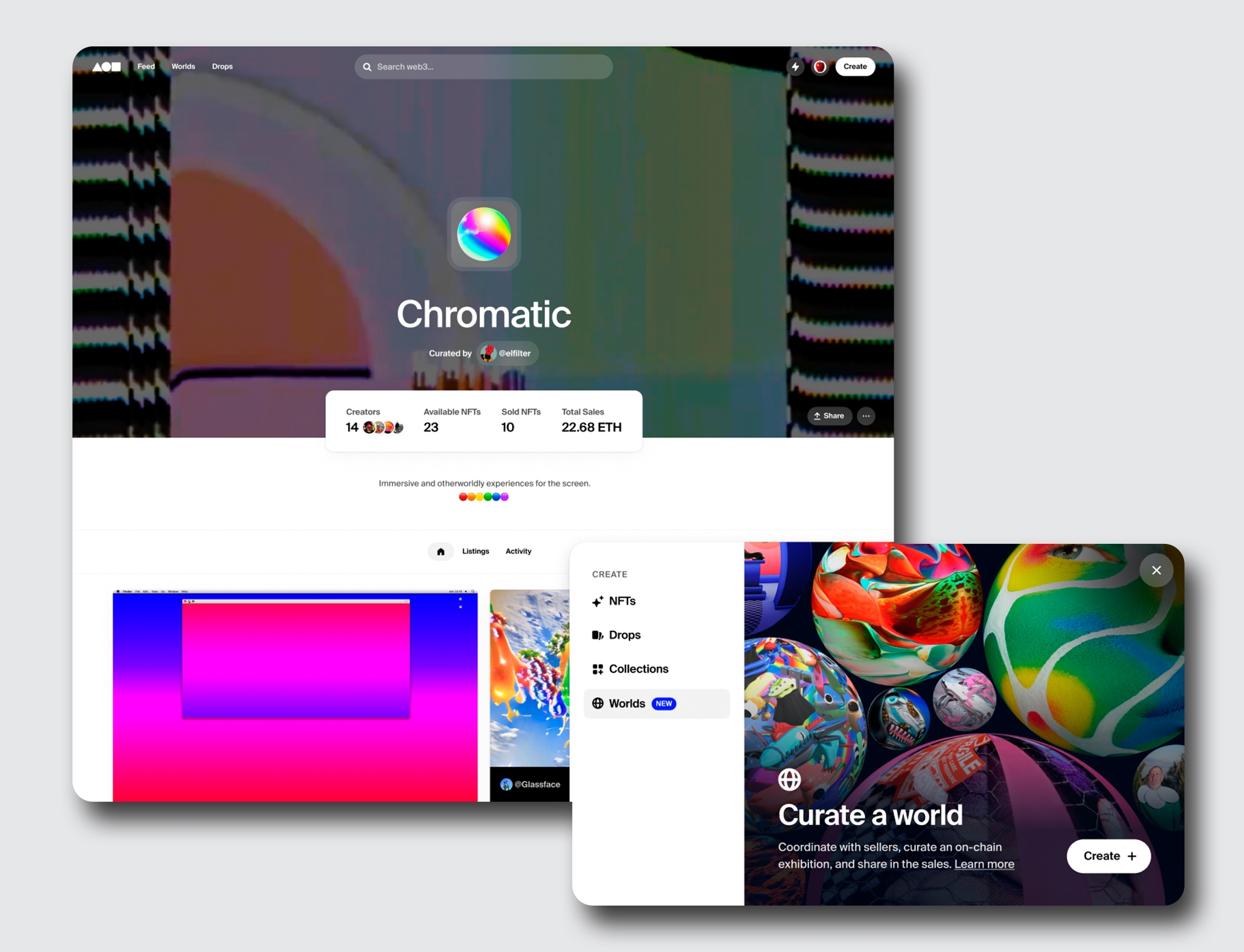
Today, the NFT platform Foundation is launching a tool called Worlds that enables anyone to organize a selection of works, in a curatorial-like gesture. This represents a major shift for crypto art, an ecosystem that has resisted intermediaries like curators and largely advocated for artists to present work directly to buyers. It suggests a move towards legitimizing works associated with NFTs as art rather than speculative assets, and raises awareness and value of curatorial work within the blockchain landscape. Released with plans for future growth, Worlds offers a clear utility for crypto art enthusiasts, but it also aims to attract audiences who haven’t traditionally engaged with NFTs—a goal that could prove challenging given the focus and scope of Foundation’s new features.
Instead of highlighting current “drops” (collections of newly released NFTs), Foundation’s home page now prominently features its first five Worlds, highlighting the company’s ambitions to create a more gallery-like experience for people interested in NFT artwork. Monolith gallery’s Exhibition X chose to be the first World listed, capturing the value of this historic moment for crypto art. Four other crypto-native galleries and artists are a part of the launch: Superchief gallery, rwx @RobekWorld, Ben @_Defi_, and @SomewhereArt.
These galleries represent loyal users of Foundation, who had even organized group shows within the platform’s previous constraints, making them natural choices for inaugurating the new tool, but a spokesperson was explicit that Foundation hopes previously hesitant art world participants will find Worlds to be an appealing and familiar context through which to begin an engagement with NFT-enabled art. Given that, the choice not to include curators who have worked with more traditional galleries and art institutions—like Harm van den Dorpel, Jason Bailey, Sophia Garcia, or Micol Ap, among others—is surprising as they might have helped bridge the NFT and art world communities.
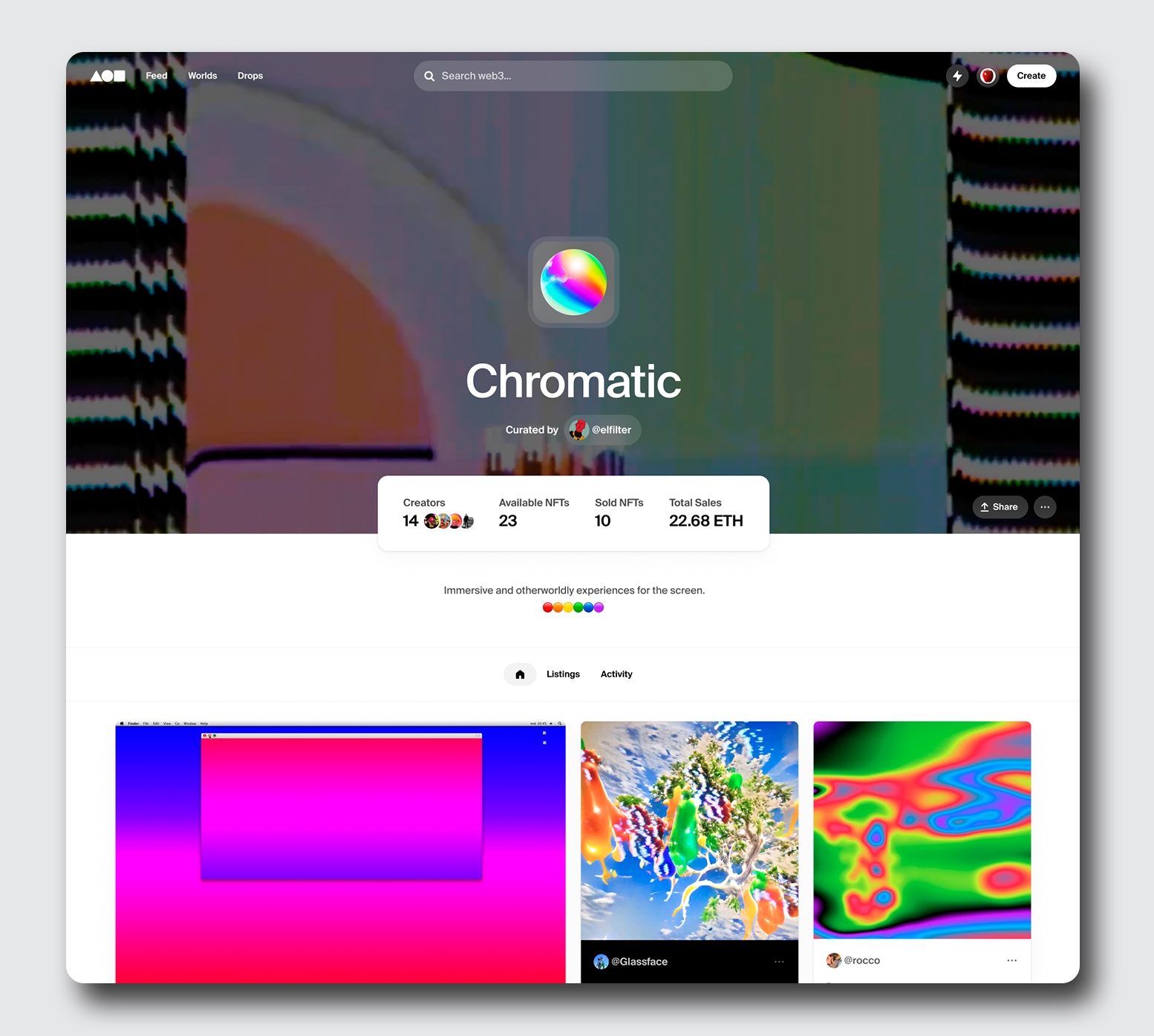
NFTs as artwork
NFT is too broad a term to describe with any clarity what a project is. The term designates the token associated with the product—NTFs operate simply as the mechanism of sale, not the actual work. Some tokens represent access to membership communities, in-person events, or charitable activity, ranging across music and sports. Over the last few years, NFTs have became conflated with digital images, but serve broader applications.
For many digital artists, NFTs enabled sale of works that had previously struggled within the art markets. But identifying those projects as NFT art is akin to calling it credit card art or wire transfer art. Certainly, the mechanisms of sale indicate something about the cost of the work, but how it’s sold ultimately conveys little about the work itself or how it relates to other artistic practices and histories. For now, NFT platforms represent how audiences can buy work, but Foundation’s introduction of Worlds implies a need for re-centering the art itself.
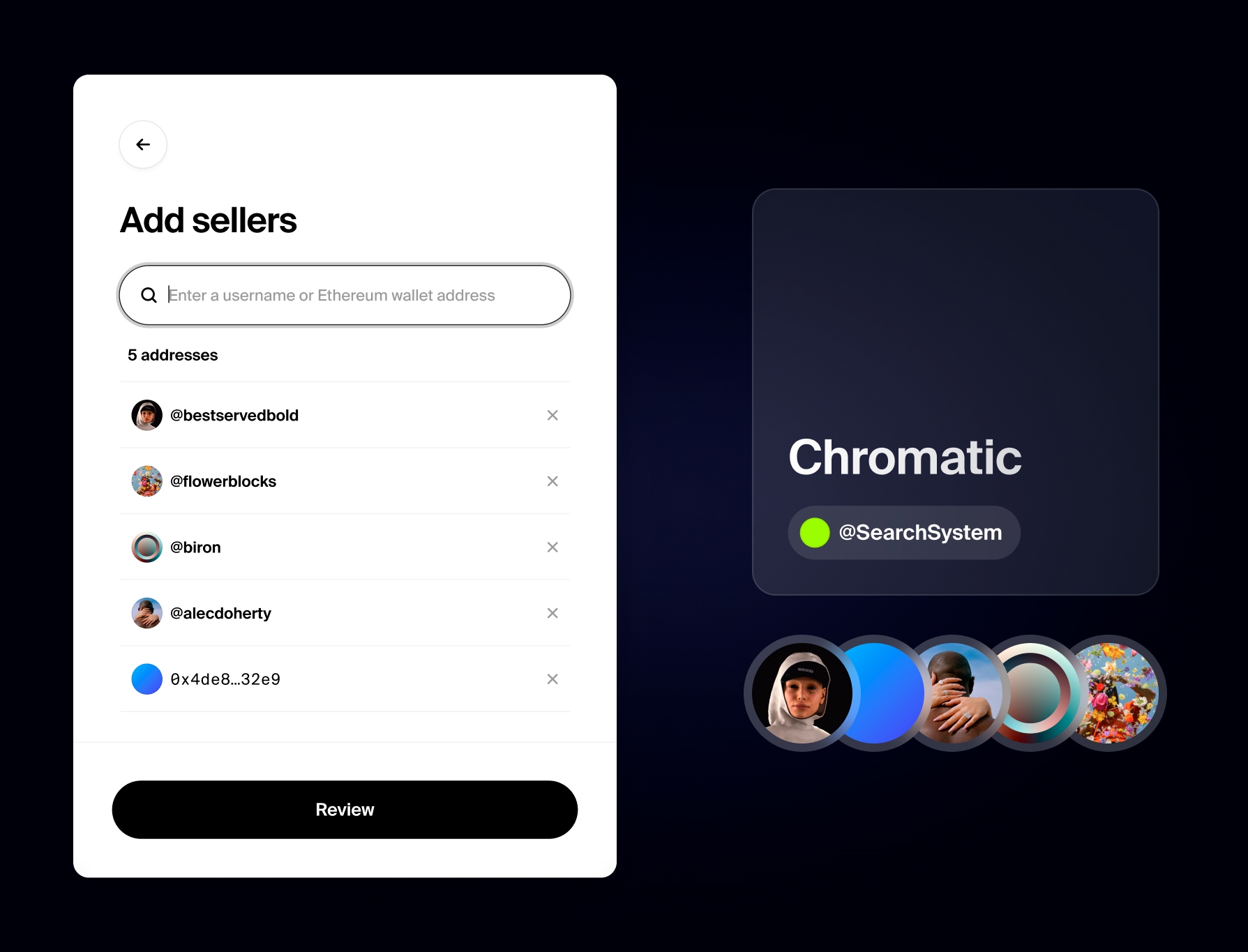
Within mainstream contemporary art, curators select works for an exhibition, contextualize these choices within a theme, articulate the relation among works, explain creative practices, and generally make artworks legible to the public. The complexity of many emergent practices, especially those tied to technology, requires this curatorial process, yet it hasn’t been the norm on NFT platforms.
On Foundation, people who create a World are “curators.” That person gives their World a title and a description of no more than 1,500 characters (approximately 225-375 words). They also establish a percentage fee for the curatorial work they do, ranging from 0 to 50%. The rest is about inviting participants. Anyone can create a World on Foundation, which makes the tool more social and less exclusive. From a critical standpoint, this will likely limit the degree to which Worlds are taken seriously as curated efforts. And that will likely limit adoption by curators seeking to gain critical recognition for the artists in their exhibits.
Curators of Worlds can invite up to 50 people to list works within each space. Artists mint new projects or connect something indexed on Foundation that remains unsold. Collectors can also participate. This is designed specifically to support secondary markets and ongoing interest in these projects and practices, thereby also potentially directing resale royalties to artists, which remains one of the greatest advocacy areas of crypto art even as some platforms are now shamefully discontinuing the practice.
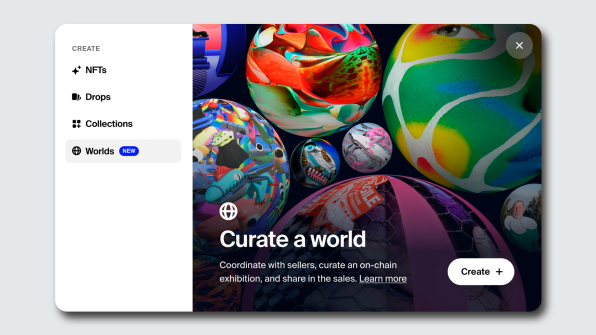
Curation is critical
Blockchain provides a very useful sales mechanism, but that’s not enough to generate a sustainable art market—as became clear over the last year as NFTs’ value plummeted. Conversation is crucial to selecting and presenting art. Curators develop a knowledge base about artists and artworks that allows them to then cultivate the interest and enthusiasm for the subsequent buying and selling. Especially when the work is novel. Foundation recognizes that off-platform, or even offline discussions, are crucial to preparing exhibitions. Too often, digital technologies are treated as replacements for human interaction. As one of Foundation’s co-founders, Matthew Vernon said, “lean on humans to do human work.”
So long as the work is displayed in a World, it is only available for sale there, making the organizer a spokesperson and conduit. For many curators, managing the monetary side of sales is the least appealing aspect of their work, and blockchain enables the automation of payouts. Though this should attract some digital art curators, the initial version of Worlds has limitations that could dissuade curators who require more than 350 words to articulate their vision for the show and reasons for artists or works selected.
Most traditional curatorial texts are well over the word limitation currently enabled by Foundation. I asked curators from the contemporary art and the crypto art scenes about whether they could adequately discuss a show within Foundation’s 1,500 character allotment, and replies ranged from “lol” to “that’s tough!” But, I also heard the vaguer, “I’m recently into curatorial one liners actually hahaha” and finally, “Yes definitely!” Unable to present customary background information about the individual works or artists demands that World curators find other ways to share that knowledge—like tweeting or making a separate static site—neither of which tie that information to the exhibit space. Asked about this limitation, Vernon (who is also Head of Design) emphasized that Foundation aims to add additional curatorial tools to Worlds after the initial launch proves their demand.
Many digital art galleries have been doing similar work. Feral File, a blockchain gallery co-founded by artist and UCLA professor Casey Reas, was launched in April 2021 with extensive curatorial text and artwork descriptions, and it has only expanded. These textual aids serve to support interest in how and why artists adopt this emergent technology as well as articulate the ways and means of the exhibition, as is standard in art circles. Feral File is not alone. Other current web-based galleries make the same effort, like Epoch Gallery, founded by Peter Wu+ and JPG, a site designed to enable more focused explorations of art using NFTs. JPG offers plenty of room for curators to describe their presentations and the selected artists’ works, with leading digital artists participating in shows on the site.
These platforms highlight the artists and practices as a way to garner appreciation of the aesthetic and conceptual rigor in the works being presented. Feral File includes interviews with artist or curator to help audiences grasp not only this emergent technology but also the novel practices and concepts particular to the exhibition. Epoch presents more limited text since the exhibition is an entire VR world that audiences need to explore, as the experience, much like installation art, is fundamental to understanding the concept on display. Even so, descriptions appear throughout each Epoch world to help audiences appreciate the works immersed within the space.
Brick and mortar galleries like Kate Vass in Zurich or Vellum in LA have shown web-based group exhibitions, with accompanying curatorial text. Others have launched web showcases, like PostmastersBC and PaceVerso, adopting the single-artist drop model, but retaining standard practices like press releases articulating how the work extends the artist’s creative practice. The generative art platform ArtBlocks includes a curated section showcasing selected artists’ particularly innovative uses of generative systems; they offer an overview text and interview to support collectors’ understanding of the project’s drive and value.
The author and activist Catherine Mayer recently tweeted: “Scrolling through @opensea this morning & still don’t get NFTs as an art form. Can anybody show me an NFT worth “owning” for any reasons other than as an investment?” As someone who is knowledgeable about data driven technologies, Mayer’s tweet makes evident that dismissal stems not from confusion navigating these spaces, but an inability to sort the morass by any art values. Those remain key to any fiscal value.
The decline in cryptocurrencies over the course of 2022 slowed the wild market around NFTs, but it did not halt the practice for those artists who found the emergent technology of blockchain a worthwhile creative endeavor. As many involved in blockchain-based art markets articulated, the best art was becoming increasingly visible precisely because the commercial excess of speculative projects waned. Celebrating those works requires spaces to focus attention and language to discern artists’ practices. Established galleries as well as newer blockchain-based galleries are doing this, but Worlds offers this model for crypto-art enthusiasts. Its success depends upon participants’ ability to express the values, aesthetics, and ideologies inherent to this new phenomenon for a wider audience.
(22)

